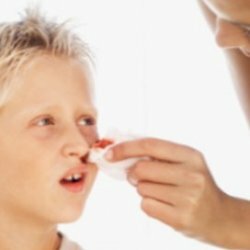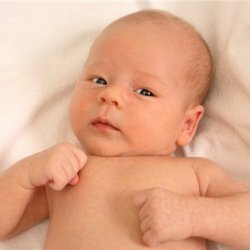Adenoids in children
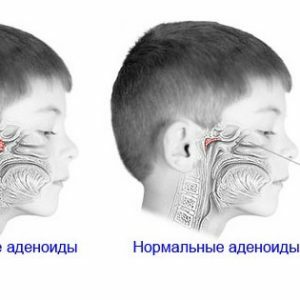 The term "adenoids" has a direct relationship to the nasopharyngeal tonsil and denotes its proliferation, a pathological increase.The nasopharyngeal tonsil is one of the six tonsils forming a protective lymphoid barrier in the human throat.In norm it is well developed in children of younger and middle age.In the adolescent period, the size of this amygdala should decrease, and in adults it should not be determined at all.
The term "adenoids" has a direct relationship to the nasopharyngeal tonsil and denotes its proliferation, a pathological increase.The nasopharyngeal tonsil is one of the six tonsils forming a protective lymphoid barrier in the human throat.In norm it is well developed in children of younger and middle age.In the adolescent period, the size of this amygdala should decrease, and in adults it should not be determined at all.
Adenoids: causes of nasopharyngeal tonsil growth
Tonsils are formed by lymphoid tissue, and when they enter the upper airways of pathogens they start producing immunoglobulin A and immune cells( lymphocytes), Coming into the fight with microbes.But when the attacks of viruses and bacteria become frequent and massive, and the human body is weakened by previous diseases, the tonsils do not cope with the task set before them and begin to work in an enhanced mode.Trying to ensure a sound protection to the body, they increase in size.And if, after a normal illness, the tonsils quickly return to normal, then in such a situation they start to grow again before they can decrease.As a result of such overloads, adenoid vegetations( growths) are formed, which ultimately do not allow the child to breathe freely, more or less overlapping the lumen of the nasopharynx.
Depending on the severity of vegetation, ENT doctors distinguish three degrees of adenoids:
I degree - adenoids cover only a third of the lumen of the nasal passages, the child breathes freely with his nose and only in horizontal position experiences some difficulty in inhaling and exhaling;
II degree - most of the time the child breathes through the mouth, as the enlarged nasopharyngeal tonsil halfway closes the lumen of the nasal passages;
III degree - the child can not breathe through the nose, since the adenoids completely cover the lumen of the nasal passages, and breathes only the mouth.
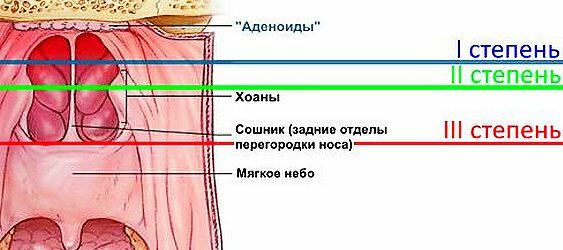
Why do children become at risk for developing adenoids?
Children under 5 years old, preschool children and younger students are the most numerous risk group for the development of adenoids.Pre-school and school institutions are mass gatherings of children, in which there is a cross-exchange of various microorganisms, including pathogenic ones.
Symptoms of adenoids in children
Clinical manifestations of the disease:
- difficulty in nasal breathing, not only during the common cold, but also against a background of complete health;
- frequent rhinitis, poorly treatable;
- dry cough in the morning;
- Continuous breathing through the mouth;
- restless sleep, sniffing, snoring and breath holding in a dream;
- nasal and incomprehensible speech;
- lethargy, sudden mood changes, fatigue and irritability;
- increased headaches;
- hearing impairment;
- indifferent expression, mouth ajar, lower jaw lowered, nasolabial folds smoothed, wrong bite - typical "adenoid" face.
How does the doctor diagnose adenoids?
For the diagnosis, the otorhinolaryngologist analyzes the history data, listens to complaints, asks the parents, examines the child.Obtained information to an experienced specialist is enough to suspect adenoids and put a preliminary diagnosis.
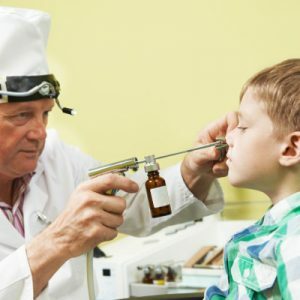 For its confirmation, the doctor examines the nasopharynx of the child.To replace finger research, examination of it with the help of mirrors and X-ray came highly accurate harmless methods of examination: computed tomography and endoscopy.This is especially important for pediatric otorhinolaryngology, since small patients do not tolerate painful and unpleasant diagnostic procedures.
For its confirmation, the doctor examines the nasopharynx of the child.To replace finger research, examination of it with the help of mirrors and X-ray came highly accurate harmless methods of examination: computed tomography and endoscopy.This is especially important for pediatric otorhinolaryngology, since small patients do not tolerate painful and unpleasant diagnostic procedures.
Note: endoscopy of the nasopharynx is a fairly informative method of examination.It is performed under local anesthesia and involves insertion into the nasal cavity of a thin long tube with a video camera at the end.The doctor visually assesses the condition of adenoids and the degree of their increase, studies the anatomical features of the nasopharynx of the child, due to which some children and with adenoids of the third degree breathe freely freely, while others already complain of hearing loss at the first degree of pathology.Important: the doctor takes a decision on the need for surgical treatment of adenoids only after endoscopy.
Adenoids: complications and concomitant diseases
When the first signs of adenoid growths of the child appear, the pediatrician should be shown, which if necessary will send it to the ENT doctor.Adenoids need to be treated. Otherwise, the risk of complications is high, among them:
- inflammation of the paranasal sinuses( sinusitis( reference to the article), frontal, etmoiditis, sphenoiditis);
- recurrent inflammatory processes in the nasopharynx, middle or inner ear, trachea and bronchi, lungs;
- formation of chronic diseases of the respiratory system( rhinitis, laryngitis, bronchitis, bronchial asthma, etc.);
- inflammation of adenoid vegetations - adenoiditis( acute or chronic);
- deformation of the maxillofacial part of the skull with the formation of an "adenoid" face and malocclusion;
- chest deformation of the "chicken breast" type due to constant surface breathing;
- speech and auditory disorders;
- decreased intelligence due to hypoxia of the brain;
- disorders from the digestive, urinary, endocrine glands.
Treatment of adenoids in children
Treatment of adenoid outgrowth involves the restoration of free nasal breathing, rather than getting rid of once and for all from the nasopharyngeal tonsil, which is an important link in the body's immune system.Removal of it will certainly entail a weakening of immunity.
Dr. Adnan Yunusov, Doctor of Medical Sciences, Professor, Head of Pediatric ENT Pathology Department of FBG "Scientific and Clinical Center of Otorhinolaryngology of FMBA of Russia", Honored Doctor of the Russian Federation recommends first of all to use all possible conservative methods of treatment.
The conservative methods of treatment of adenoids in children include:
-
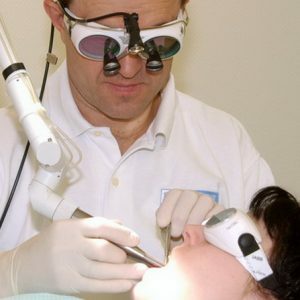 Local procedures is the instillation of medicinal products, the washing of the nasal passages with sea water, the use of drugs that increase local immunity.Do not neglect inexpensive, but well-proven drops Collargol and Protargol.They contain silver and iodine and have a powerful anti-inflammatory effect.Please note: you can not store them in the refrigerator for longer than a week.Bury in the nose, these drops need to be warmed, first shaking the bottle, in the position of the child lying with the head as much as possible thrown back, so that the medicine would fall on the adenoid growths, and not drip into the pharynx.Important: Dr. Yunusov categorically does not recommend the use of nasal drops of complex composition and drops containing hormonal substances in children.And vasoconstrictive drugs should be used only in cases when a child can not fall asleep.
Local procedures is the instillation of medicinal products, the washing of the nasal passages with sea water, the use of drugs that increase local immunity.Do not neglect inexpensive, but well-proven drops Collargol and Protargol.They contain silver and iodine and have a powerful anti-inflammatory effect.Please note: you can not store them in the refrigerator for longer than a week.Bury in the nose, these drops need to be warmed, first shaking the bottle, in the position of the child lying with the head as much as possible thrown back, so that the medicine would fall on the adenoid growths, and not drip into the pharynx.Important: Dr. Yunusov categorically does not recommend the use of nasal drops of complex composition and drops containing hormonal substances in children.And vasoconstrictive drugs should be used only in cases when a child can not fall asleep. - General strengthening therapy : vitamin and mineral complexes, immunostimulants, antihistamines.
- Physiotherapeutic procedures and laser treatment .Laser therapy is the only absolutely painless method of treatment that does not give any side effects.Acting directly on the surface of the enlarged tonsil, the laser beam improves the flow of blood and lymph in small vessels, increases their tone, thereby removing edema and inflammation.Adenoids are significantly reduced in size.
After 10-12 procedures the child's well-being improves noticeably. - Phyto-and ozonotherapy ;
- Massage and respiratory gymnastics ;
- Spa therapies .
The ENT doctor together with the pediatrician, immunologist and allergist makes an individual treatment plan for each child, selects the appropriate drugs, schemes and methods of treatment.Some of these methods are simple and accessible, but do not self-medicate adenoids.And even the use of traditional medicine in the treatment of adenoids should be approved by the attending doctor.
Removal of adenoids in children
Surgical treatment of adenoid outgrowth( adenotomy) is performed under general anesthesia and under endoscopic control in a specialized hospital setting. Assigned by strict indications, among which:
-
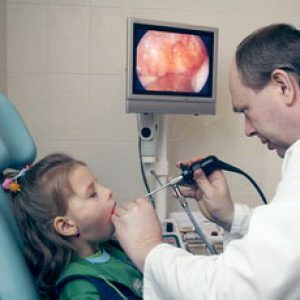 no effect from prolonged conservative treatment;
no effect from prolonged conservative treatment; - adenoiditis with frequent relapses;
- development of complications( vasculitis, sinusitis, frequent otitis, glomerulonephritis);
- hearing impairment;
- bone deformities;
- frequent breathing stops during a night's sleep.
Important: : Adenotomy is contraindicated in blood diseases, congenital anomalies of sky development, bronchial asthma, infectious diseases, severe heart diseases, skin and allergic diseases, acute adenoiditis.Do not remove adenoids for children under 3 years, for a month after any vaccination and during the flu epidemic.
About the treatment and removal of adenoids in children tells the doctor:
Prevention of the disease
Prevention of adenoids involves carrying out hardening procedures and strengthening the immunity of the child activities such as:
- as far as possible the maximum stay in the fresh air with the exception of overheating andHypothermia;
- daily execution of a complex of morning exercises with an emphasis on breathing exercises;
- sports, especially those that develop the respiratory system;
- constant humidification of air in rooms where the child sleeps and spends a lot of time;
- eating foods rich in vitamins and trace elements.
We also recommend that you familiarize yourself with the opinion of the treatment of enlarged adenoids of Dr. Komarovsky - the famous pediatrician:
Zaluzhanskaya Elena Aleksandrovna, medical reviewer, pediatrician


